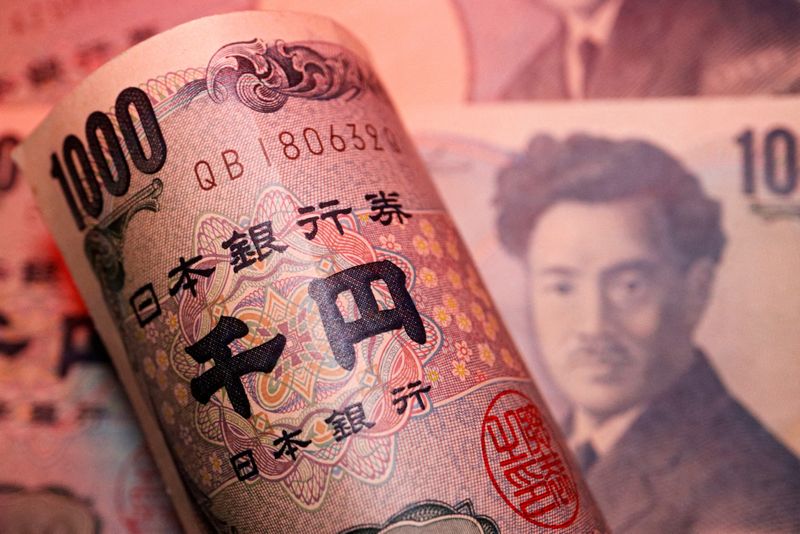By Karen Brettell and Amanda Cooper
NEW YORK/LONDON (Reuters) -The yen hit an almost four-week high against the U.S. dollar on Friday, raising speculation that Japanese authorities may have intervened for a second day to prop up the currency.
The rally in the Japanese currency, which has been languishing at around 38-year lows, began on Thursday just after data showed U.S. consumer prices for June eased, boosting the odds of the Federal Reserve cutting rates as soon as September.
On Friday, the move came after data showed that U.S. producer prices increased moderately in June.
"If they intervened yesterday, it makes it likely that they intervened today. And I think it's good strategy to keep the market off balance," said Steve Englander, head of global G10 FX research and North American macro strategy at Standard Chartered (OTC:SCBFF) Bank NY Branch.
Englander added, however, that "it could also be stops", referring to the closure of positions betting against the yen, following losses.
Daily operations data from the BOJ on Friday suggested the central bank had spent between 3.37 trillion and 3.57 trillion yen ($21.18 billion-$22 billion) on buying the yen on Thursday, less than three months after its last foray into the market.
James Malcolm, head of FX strategy at UBS in London, said Friday's move may have been the result of an intervention or of rate checking. The Bank of Japan sometimes calls dealers to ask for rate levels, which can indicate a potential intervention and itself causes market moves.
"They need to change tactics to keep the market on its toes and show they are serious. Looks like yesterday didn't cost them much. So this may ensure we close the week near the lows, which will put further technical pressure on the (dollar-yen) cross," he said.
Lou Brien, market strategist at DRW trading in Chicago, said: "You don't even have to come in big. You just have to make a few phone calls to make sure that it's well-known."
Tokyo's top currency diplomat, Masato Kanda, on Friday declined to comment on whether there was an intervention or rate checks, but said the fact that there had been a one-sided speculative move could not be ignored
The dollar was last down 0.56% at 157.91 yen after earlier reaching 157.3, the lowest since June 17. The yen touched a 38-year low of 161.96 per dollar last week.
Tokyo intervened at the end of April and in early May, spending roughly 9.8 trillion yen ($61.55 billion) to support the currency. There will be a month-end report from the ministry of finance that will confirm the amount spent on any intervention.
The gap between U.S. and Japanese rates has created a highly lucrative trading opportunity, in which traders borrow the yen at low rates to invest in dollar-priced assets for a higher return, known as carry trade.
A Fed rate cut would dent the appeal of this trade.
"The Fed will lower interest rates in September, and together with the Bank of Japan's interest rate hike, the interest rate differential between Japan and the United States will narrow in both directions," said Takahide Kiuchi, executive economist at the Nomura Research Institute in Tokyo.
"This is expected to reverse the trend of the yen's weakening. This currency intervention will likely be effective in buying time until then," he said.
Traders are now pricing in a 94% chance of the Fed cutting rates in September, compared with 73% before the CPI reading, the CME Group's (NASDAQ:CME) FedWatch Tool showed.
In Japan, nearly 90% of households expect prices to rise a year from now, a quarterly central bank survey showed on Friday, a sign of heightening inflation expectations that could help make the case for a near-term interest-rate hike.
The dollar index, which measures the U.S. currency against six others, fell 0.24% to 104.09 and reached 104.04, the lowest since June 7.
A survey on Friday showed that U.S. consumer sentiment ebbed in July, but inflation expectations over the next year and beyond improved.
The euro was up 0.36% at $1.0904 and reached $1.0911, the highest since June 4.

Sterling strengthened 0.59% to $1.2985 and hit a one-year high of $1.299.
In cryptocurrencies, bitcoin gained 1.33% to $58,324.00.